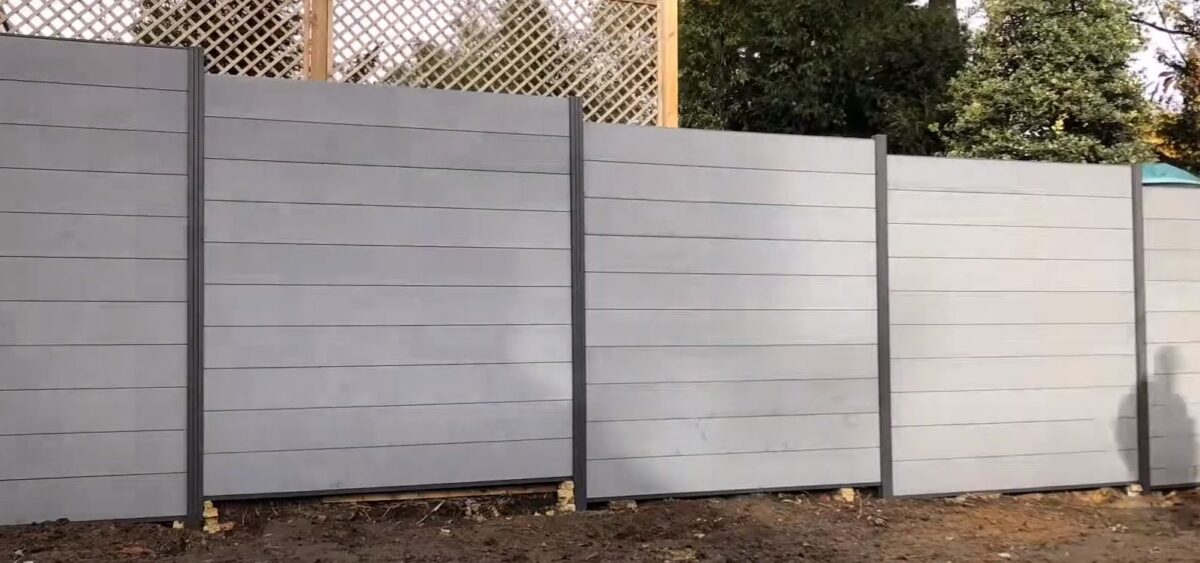How Far Apart Should Fence Posts Be?
The Importance of Proper Fence Post Spacing
Proper spacing of fence posts is crucial for the stability and longevity of your fence. It ensures the fence can withstand environmental pressures and provides the necessary support for the fencing material.
Standard Spacing Guidelines
The standard spacing for fence posts varies depending on the type of fence and the materials used:
- Wooden Fences: Typically, wooden fence posts are spaced 2.4 to 3 metres apart. This spacing provides adequate support for the panels and maintains the fence’s structural integrity.
- Vinyl Fences: Vinyl fences usually require posts to be spaced 2.4 to 2.7 metres apart. The flexibility of vinyl allows for slightly wider spacing without compromising stability.
- Metal Fences: Metal fences, such as those made from steel or aluminium, often have posts spaced 2.4 to 3 metres apart. The strength of the metal allows for greater spacing while maintaining durability.
- Composite Fences: Composite fences should have posts spaced 2.4 to 3 metres apart, similar to wood, due to their comparable weight and structural requirements.
Factors Influencing Post Spacing
Several factors can influence the optimal spacing of fence posts:
- Terrain: Uneven or sloped ground may require closer post spacing to ensure stability.
- Wind Load: In areas with high winds, such as New Lynn, posts may need to be spaced closer together to provide additional support.
- Fence Height: Taller fences require closer post spacing to prevent sagging and ensure stability.
- Material Weight: Heavier materials, like hardwood, may necessitate closer post spacing compared to lighter materials like vinyl.
Engineering Considerations
Proper engineering and installation techniques are essential for ensuring the longevity and stability of your fence:
- Post Depth: Fence posts should be set in concrete and buried to a depth of at least one-third of their height above ground. For instance, a 2.4-metre fence post should be buried at least 800 mm deep.
- Concrete Footings: Concrete footings provide a stable base for fence posts, preventing them from shifting or leaning over time.
- Drainage: Ensure proper drainage around the post base to prevent water accumulation, which can cause rot in wooden posts or rust in metal posts.
Health and Safety Considerations
When installing fence posts, consider the following health and safety measures:
- Protective Gear: Wear gloves, safety glasses, and sturdy footwear to protect against injuries.
- Safe Digging Practices: Be aware of underground utilities before digging post holes. Contact local authorities to mark utility lines.
- Proper Handling: Use appropriate tools and equipment to handle heavy materials safely.
Exceptions and Special Cases
There are specific cases where standard post spacing guidelines might not apply:
- Decorative Fences: For purely decorative fences, like those used in gardens, post spacing can be more flexible depending on aesthetic preferences.
- Temporary Fences: Temporary fencing solutions, such as those used in construction sites in Papatoetoe, may have varying post spacing based on the requirements of the site.
Summary Comparison Table of Fence Post Spacing
| Fence Type | Standard Post Spacing | Longevity Factors | Variables Impacting Longevity |
| Wooden Fences | 2.4 to 3 metres | Regular maintenance, proper sealing | Terrain, wind load, fence height, material weight |
| Vinyl Fences | 2.4 to 2.7 metres | Minimal maintenance, UV resistance | Terrain, wind load, fence height |
| Metal Fences | 2.4 to 3 metres | Rust prevention, sturdy installation | Terrain, wind load, fence height, material weight |
| Composite Fences | 2.4 to 3 metres | Low maintenance, rot resistance | Terrain, wind load, fence height, material weight |
Longevity and Variables Impacting Fence Lifespan
Wooden Fences
-
- Longevity: 10-15 years with regular maintenance.
- Variables Impacting Longevity:
- Moisture: Excess moisture can cause rot and decay.
- Insects: Termite damage can compromise structural integrity.
- Maintenance: Regular staining or painting can extend lifespan.
Vinyl Fences
-
- Longevity: 20-30 years with minimal maintenance.
- Variables Impacting Longevity:
- UV Exposure: High UV exposure can cause fading over time.
- Temperature Fluctuations: Extreme temperatures can cause vinyl to expand and contract, leading to cracks.
Metal Fences
-
- Longevity: 20+ years with proper maintenance.
- Variables Impacting Longevity:
- Rust: Regular application of rust-preventative coatings is necessary.
- Corrosion: Coastal areas with salty air require extra protection.
Composite Fences
-
- Longevity: 25-30 years with low maintenance.
- Variables Impacting Longevity:
- Moisture Resistance: Composite materials are generally resistant to moisture but still need proper installation to avoid water damage.
- UV Resistance: High-quality composites resist UV damage, maintaining their appearance longer.
Ensuring the correct spacing of fence posts, understanding the materials, and considering local conditions are all crucial for building a durable and lasting fence. Engaging Quality Fencing Auckland can provide the expertise needed for a successful fencing project tailored to your specific needs.
Other Locations:



